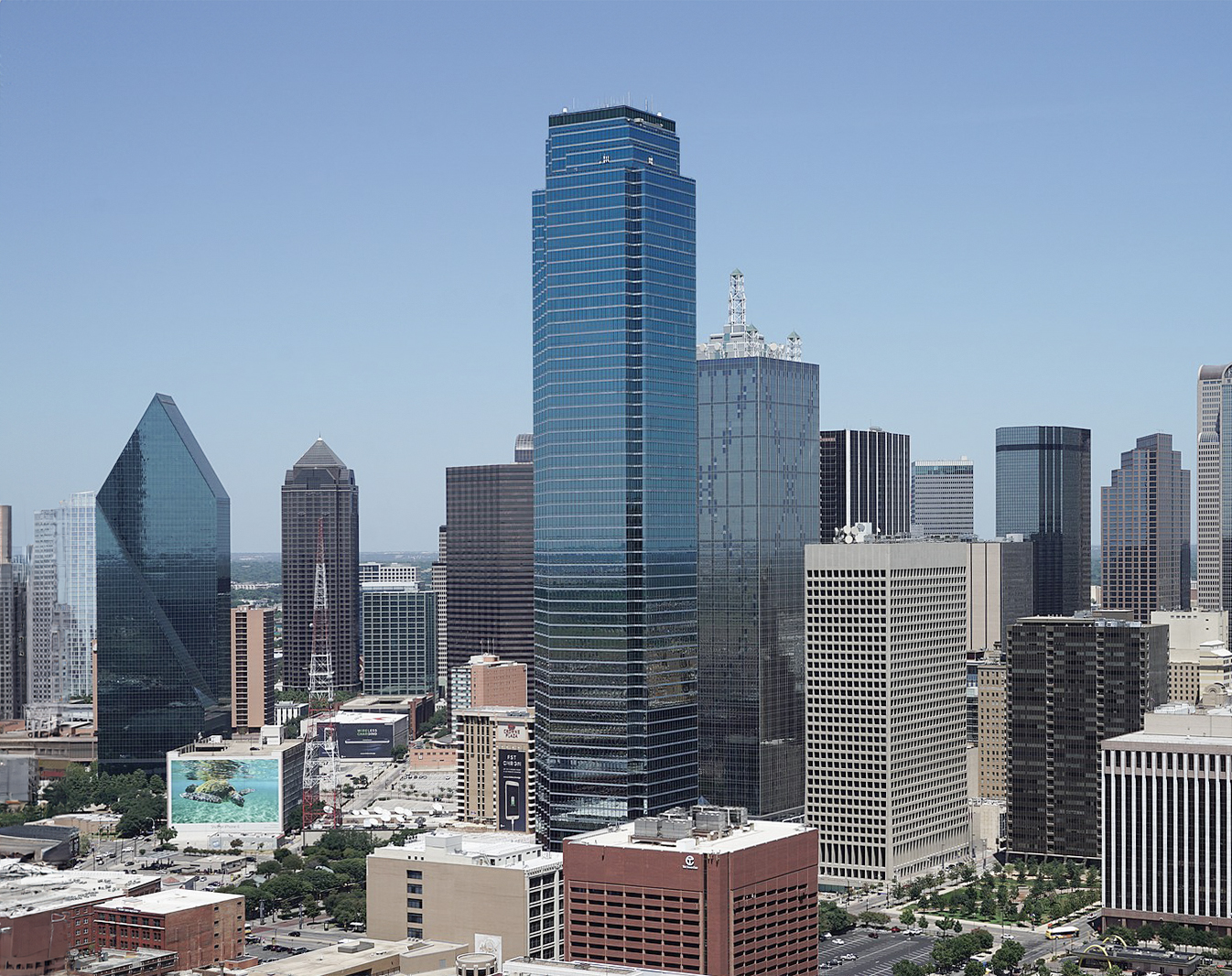The Bank of America Plaza is a Modern Style skyscraper designed by JPJ Architects, and built between 1983 and 1985, for a reported $146 million dollars, in Dallas, TX.
Bank of America Plaza is not the only name you might know this building by though. It is common for companies to want to attach their names to iconic buildings when they move in, or for the general public to come up with nicknames, and this one is no exception. The building has changed names several times over the years, and is also known as:
- InterFirst Bank Plaza between 1985 and 1986.
- First Republic Bank Plaza between 1986 and 1988.
- NationsBank Plaza between 1991 and 1998.
Its precise street address is 901 Main Street, Dallas, TX. You can also find it on the map here.
The Bank of America Plaza tower was the only completed structure from a plan called "Dallas Main Center", which included another twin tower, a hotel, and a parking facility. As a result of the mid-1980s financial crisis that impacted oil prices, real estate, and banking, these additional structures were never realized.
The building underwent a major restoration between 2013 and 2013.

